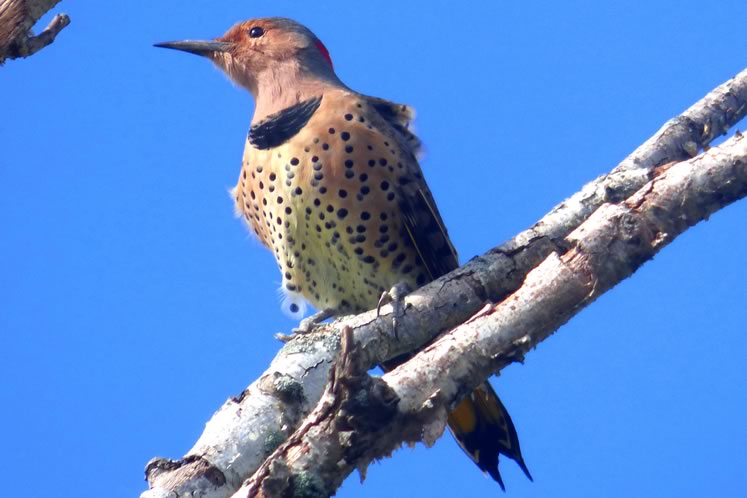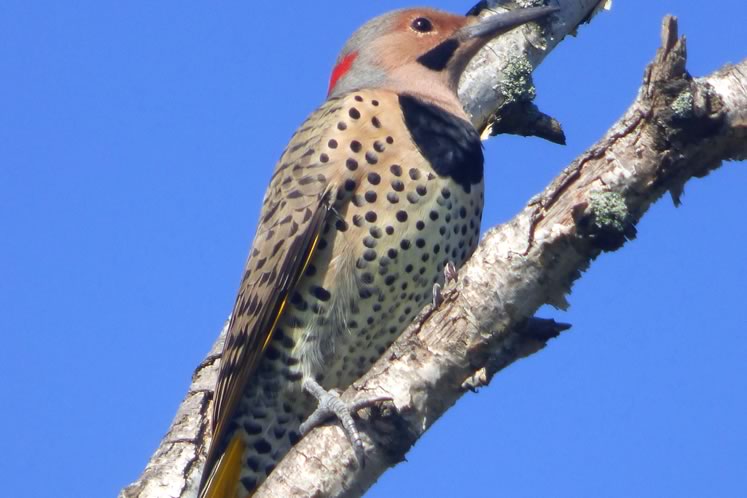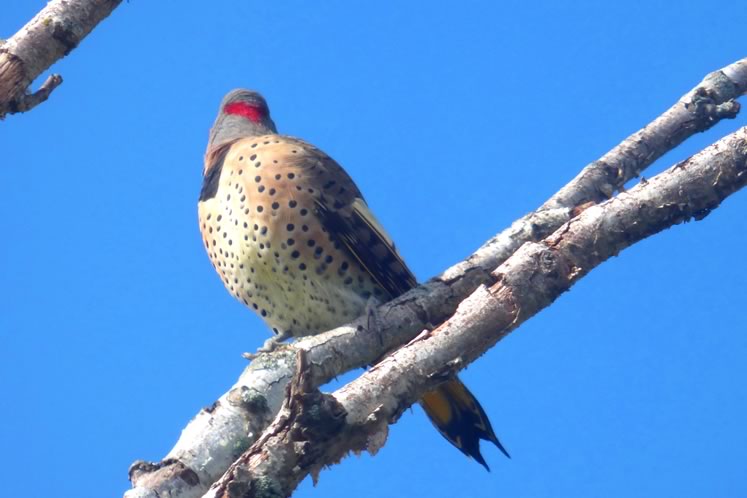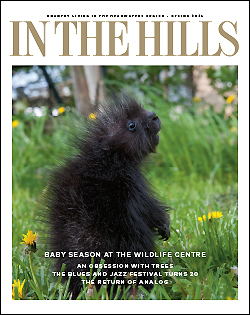Flickers
Northern flickers are boldly and beautifully marked woodpeckers that are common throughout the Headwaters.
In the tropics aardvarks, pangolins and anteaters have evolved to eat ants and termites. These pointy-snouted mammals insert long sticky tongues into ant and termite mounds to capture the squirming insects within.
We have anteaters too, but our anteaters fly. These are northern flickers, woodpeckers that are common throughout the Headwaters. Boldly and beautifully marked and a little larger than robins, northern flickers, like their tropical mammalian counterparts, catch ants with long sticky tongues.
During the breeding season flicker babies are fed ants and little else. Famed biologist Bernd Heinrich examined a single meal delivered to a flicker nestling and discovered that it consisted of 216 ants – larvae, pupae and adults. He then estimated that it would take about 21,600 ants to raise a single flicker nestling to fledgling stage!
The flickers’ ant habit explains why these woodpeckers are often found in meadows or even backyards feeding on the ground on or near ant hills.
Ants are a reliable and abundant food source spring to fall, but become largely inaccessible in winter, when their activity ceases and the ground freezes.
Carpenter ants, dormant in their tree galleries, are still available – a food source tapped into by the magnificent pileated woodpeckers. But flickers have a slightly curved beak, not as well suited to excavating wood as the stout chisel-like beaks of the pileateds.
So what’s a respectable anteater to do when the snow flies? Fly of course, southward to places where the crawling ant legions are still active. Most flickers do this, except a few hardy (foolish?) individuals who tough it out by scarfing down berries and gorging occasionally at suet feeders.
The return of flickers in spring signals the thawing of the earth and puts birders in good cheer – a sentiment that clearly isn’t shared by our resident ants.
Related Stories
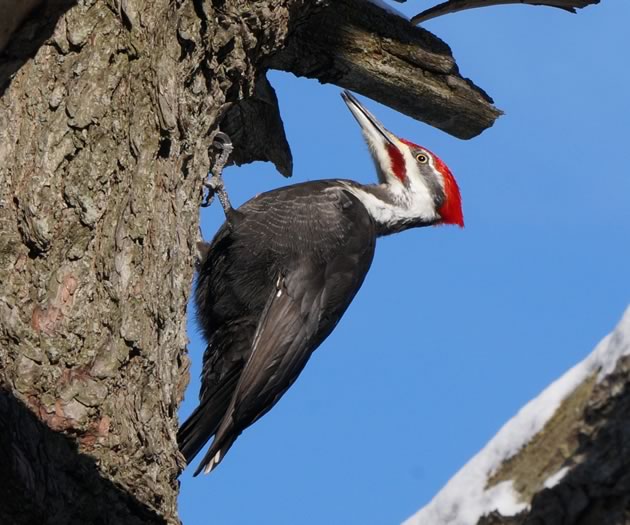
The Pileated Woodpecker
Jan 30, 2016 | | Notes from the WildNot only do these woodpeckers have remarkable adaptations for excavating wood, they also have acute hearing that allows them to pick up the telltale sounds of ants scurrying within trees.

Backyard Birding 127… 128… 129… and Counting
Jun 17, 2013 | | LeisureBirdwatchers like me are notoriously nerdy, and the essence of this is a fascination with lists.

